|
|
Comments: This is the first of two uses of Obverse 1 and the only use of Reverse 1846 B in 1847. Reverse 1846 B is transitional, first used to strike the OC-2 die marriage in 1846. |
Obverse 1 The photo below shows the Obverse 1 attribution grid. 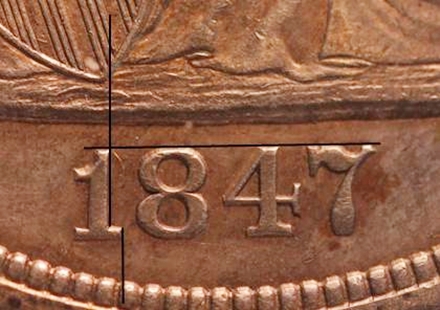 1847 Obverse 1 attribution grid Obverse 1 exhibits faint die lines slanting down to the right, extending from the right edge of the shield into the gown just above the Y in LIBERTY. These are shown in the photo below. 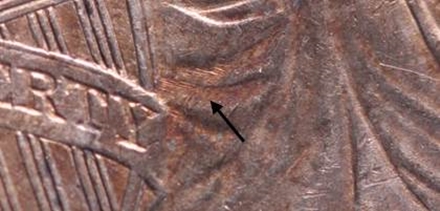 1847 Obverse 1 die lines in gown These die lines provide an additional marker to assure proper attribution, but they aren't really required since the date positions for the two known business strike obverse dies are significantly different.
|
Reverse 1846 B 1846 Reverse B features one fairly notable die marker. Vertical shield line 1-1 extends through the horizontal shield lines to horizontal shield line 7. This may be visible only on mid- to high-grade examples, VF or better. And even then, it may require relatively high magnification to see it. 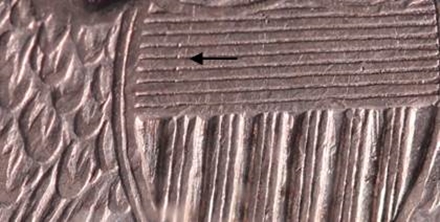 1846 Reverse B shield line 1-1 extension During its 1846 use reverse B cracked at the base of ONE and across the top of UNITED STATES of AMERICA. Since these cracks appear on all 1847 strikes they’re the most reliable markers for identifying this die. The cracks are shown in the following photos. 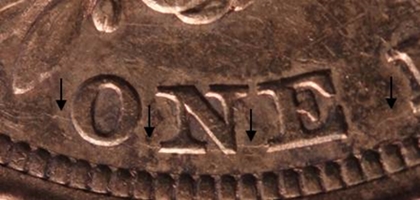 1846 Reverse B die crack at base of ONE 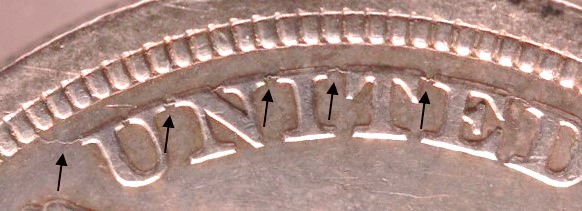 1846 Reverse B die crack across top of USA
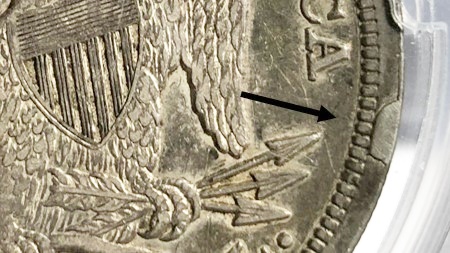 1846 Reverse B rim cud opposite the upper arrow tip Reverse 1846 B is used only for the OC-1 die pairing. During this pairing the die cracks progressed until they surrounded most of the reverse at the top of the lettering, and eventually formed the cud that’s characteristic of state e. OC-1 is found only with states c, d, and e. We’ve only observed a single example of state e, but two others have been reported, so we’re confident that it’s truly a cud rather than just a rim issue. This die marriage is usually seen with die rotation of 5-10 degrees counterclockwise. Unrotated examples are very rare. We’ve also seen two examples of late die states with 5-degree clockwise rotation. |
| Photo credits:
Obverse 1: 1847 NGC AU55, from the Osburn-Cushing reference collection. Reverse 1846 B: 1846 PCGS XF45, from the Osburn-Cushing reference collection. |
